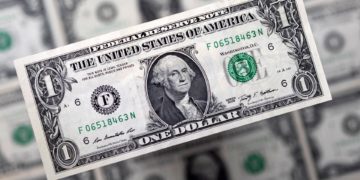This is probably what you all have been waiting for – drumroll please – using the Elliott Wave Theory in forex trading!
As an Elliott Wave trader, you will be spotting “wave-counts.”
This means that you will be labeling the waves to see how they conform to the Elliott Wave pattern, to try and anticipate future price movement.
In this section, we will look at some setups and apply our knowledge of Elliott Wave to determine entry, stop loss, and exit points. Surfs up!
Hypothetical, will-most-probably-be-right scenario #1:
Let’s say you wanted to begin your wave count. You see that price seems to have bottomed out and has begun a new move upwards.
Using your knowledge of Elliott Wave, you label this move up as Wave 1 and the retracement as Wave 2.

In order to find a good entry point, you head back to the School of Pipsology to find out which of the three cardinal rules and guidelines you could apply. Here’s what you found out:
- Rule Number #2: Wave 2 can NEVER go beyond the start of Wave 1
- Waves 2 and 4 frequently bounce off Fibonacci retracement levels
So, using your superior Elliott Wave trading skillz, you decide to pop the Fibonacci tool to see if the price is at a Fib level. Holy mama!
Price is just chillin’ like ice cream fillin’ around the 50% level. Hmm, this could be the start of Wave 3, which is a very strong buy signal.
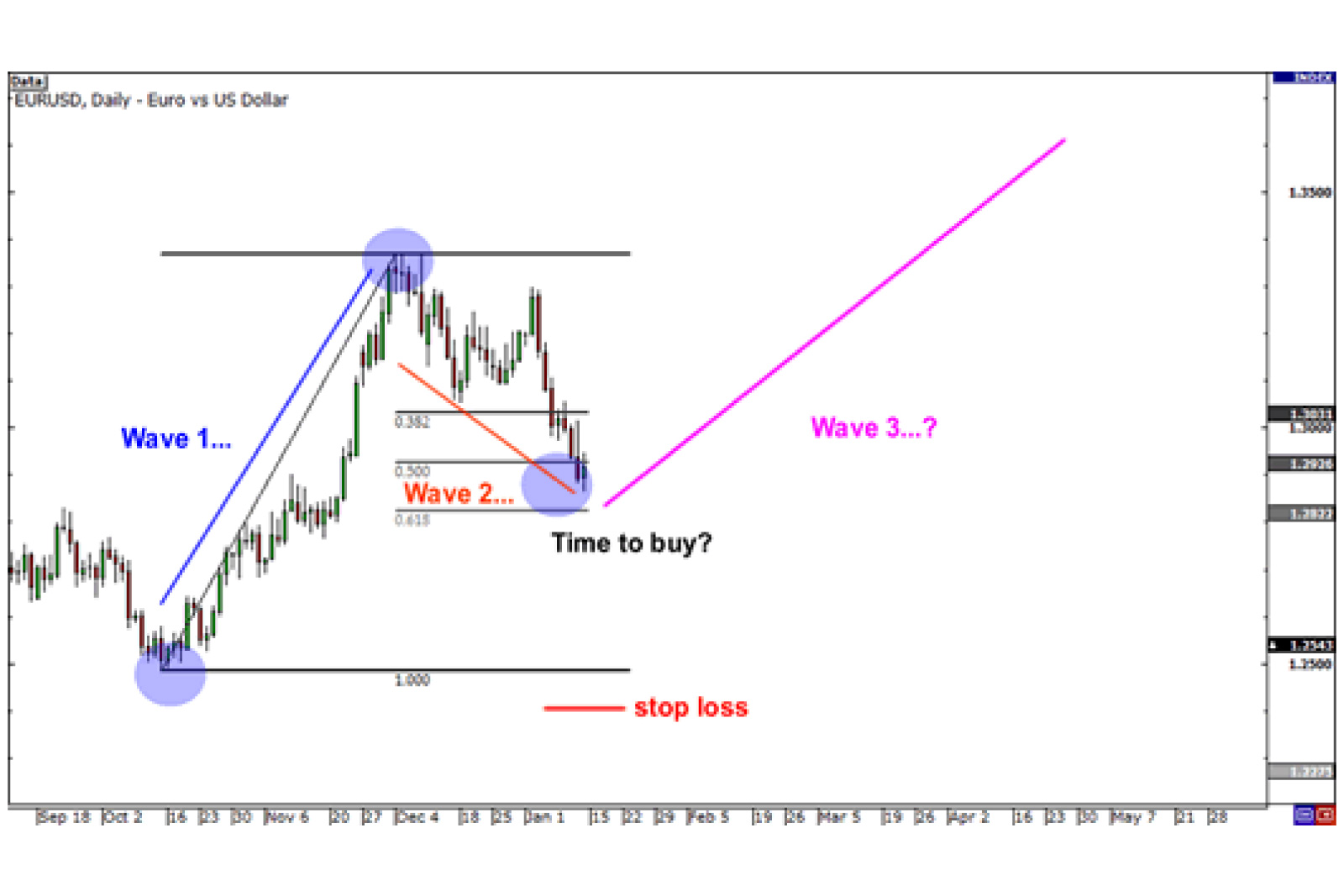
Since you’re a smart forex trader, you also take your stop into consideration.
Cardinal rule number 2 states that Wave 2 can never go beyond the start of Wave 1 so you set your stop below the former lows.
If price retraces more than 100% of Wave 1, then your wave count is wrong.
Let’s see what happens next…
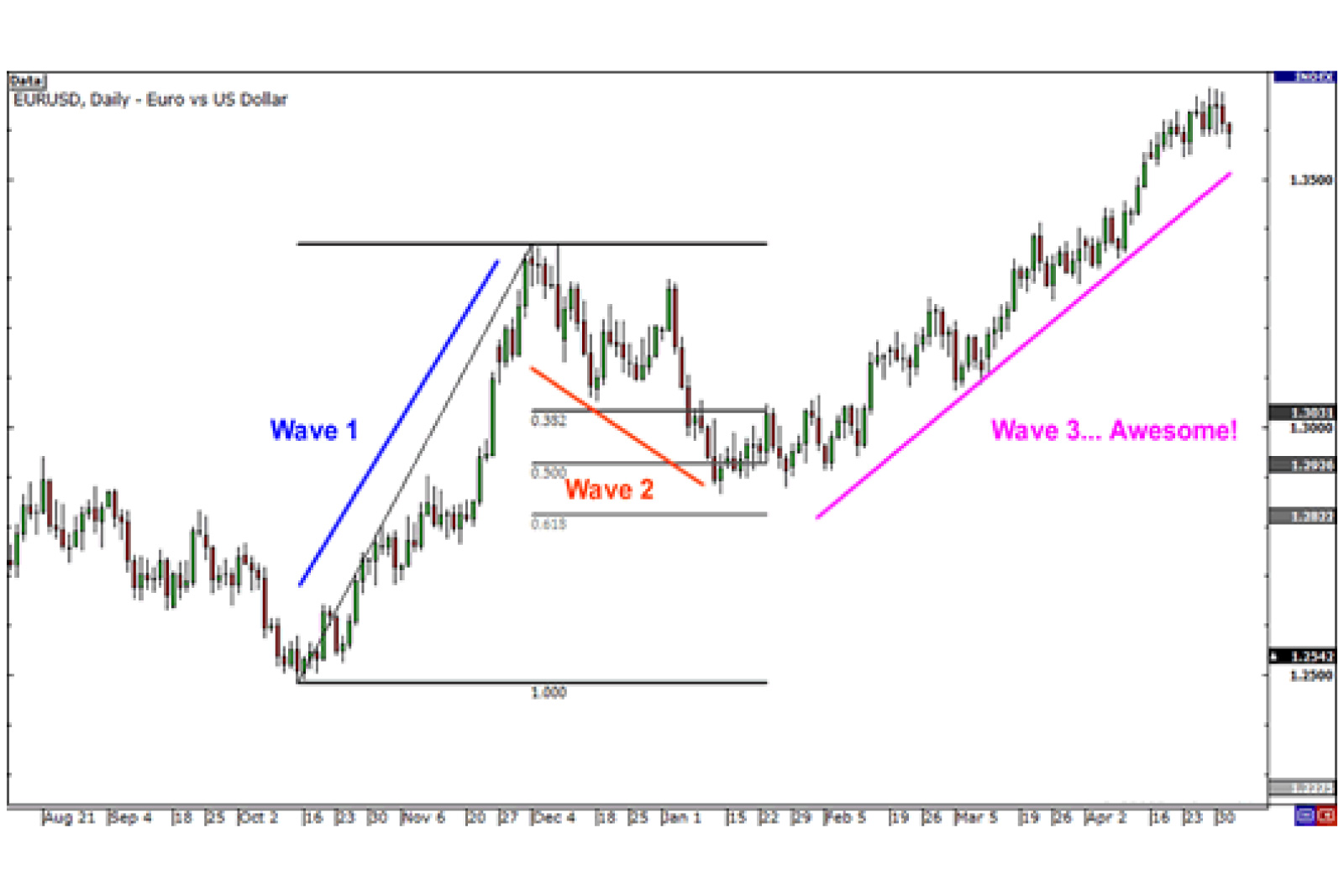
Your Elliott Wave analysis paid off and you caught a huge upward move!
You go to Las Vegas (or Macau), overconfident that everything you touch is a winner, blow all your forex profits on roulette, and end right back where you started.
There are no Elliot Waves in a casino.
Lucky for you…we have another hypothetical scenario where you can earn imaginary money again…
Scenario 2:
This time, let’s use your knowledge on corrective wave patterns to grab those pips.
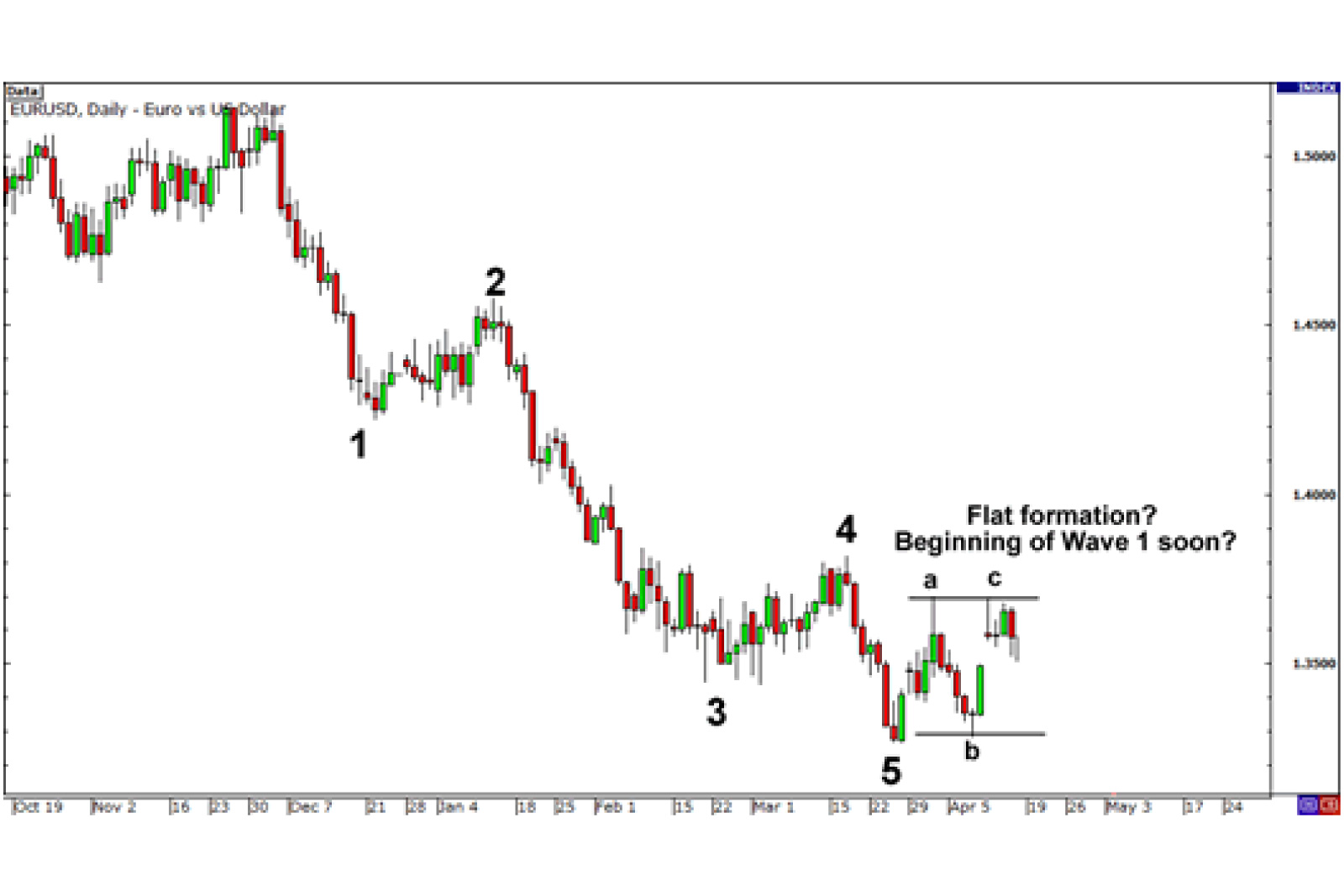
You begin counting the waves on a downtrend and you notice that the ABC corrective waves are moving sideways.
Hmm, is this a flat formation in the works? This means that price may just begin a new impulse wave once Wave C ends.

Trusting your Elliott Wave skills, you go ahead and sell at the market price in hopes of catching a new impulse wave.
You place your stop just a couple of pips above the start of Wave 4 just in case your wave count is wrong.
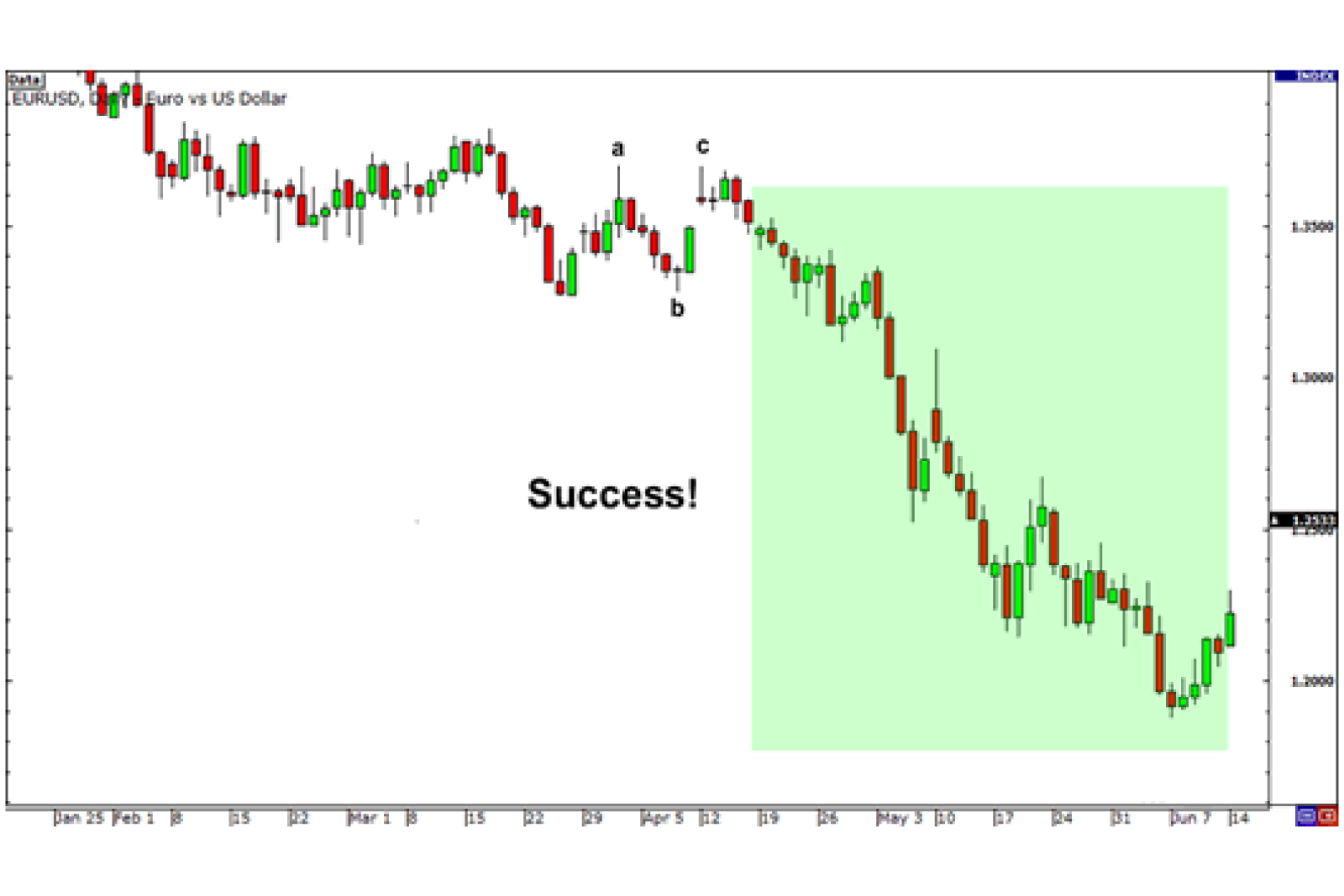
Because we like happy endings, your trade idea based on the Elliott Wave Theory works out and nets you a couple of thousand pips on this day, which is not always the case.
You have also learned your lesson this time around so you skip Vegas and decide to use your profits to grow your forex trading capital instead.






















